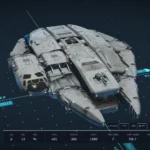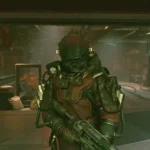Are Chilled Enemies Slowed in Diablo 4? Unraveling the Frosty Mystery!
Picture this: you’re battling hordes of demons in the frigid depths of Diablo 4, desperately seeking an advantage to turn the tide in your favor. Suddenly, you unleash a chilling attack that leaves your enemies shivering in their demonic boots. But here’s the burning question: does this icy assault actually slow them down? Let’s dive into the frosty depths of Diablo 4 and uncover the truth behind the chill effect. Get ready to freeze your foes and leave them in a shivering standstill as we explore the intriguing world of chill and slow in Diablo 4.
Delving into the Intricacies of Chill and Slow in Diablo 4

diablo 4
When you immerse yourself in the ruthless, yet captivating world of Diablo 4, having a firm grip on the game mechanics can be your lifeline. Among the myriad of tactics at your disposal, the effects of Chill and Slow command particular attention. These two status effects, while often misconstrued as similar, are distinct elements within the game’s combat mechanics. This subtle yet crucial difference can be a game-changer, influencing the way you strategize and engage in combat.
Firstly, let’s debunk a common myth: “Chill” equals “Slow”. This is a misconception that could cost you dearly in the heat of battle. The truth is, Chill and Slow are independent effects in Diablo 4, each with its own set of unique attributes. Understanding this dichotomy is pivotal in enhancing your combat efficiency and survival chances.
In this regard, it’s essential to note that Chill operates on a stacking mechanic. It accumulates based on a percentage, and once it hits the 100% mark, the affected enemy freezes. However, this chilling effect has a catch – it diminishes over time if not reapplied. This forces you to keep a close watch on your enemies, making the combat dynamics even more thrilling.
On the other hand, Slow maintains consistency. It’s a set amount that remains unaffected by stacking. This makes it a constant element you can rely on during your battles. It’s also worth noting that Chill does not count towards “damage to slowed enemies” on a weapon. This is a common misconception that can lead to misguided strategies and disappointment.
Furthermore, both Chill and Slow fall under the classification of Crowd Control (CC), making them invaluable tools for controlling the battlefield. However, remember that Chill is not Slow and vice versa. To inflict damage on slowed enemies, your weapon needs to have an “enemies are slowed” effect. This understanding is essential for tailoring your offensive strategies.
So, the answer to the question, “Are chilled enemies slowed in Diablo 4?“, is a resounding no. They are separate effects with distinct characteristics, and understanding this is crucial for mastering the game.
Deciphering the Chill Effect

chill effect diablo 4
Within the chaotic, dark world of Diablo 4, understanding the nuances of status effects can drastically alter the tide of battles. Among these status effects, Chill can serve as a powerful tool in your arsenal. Not merely a minor nuisance for your adversaries, Chill is a unique, percentage-based mechanic that can freeze enemies in their tracks, effectively acting as a game changer in high-stakes combat scenarios.
Interestingly, the Chill effect is not an immediate, one-off occurrence. Instead, it operates using a stacking mechanic. As you continue to apply Chill to your enemies, it accumulates, slowly building up a percentage. This percentage is your ticking time bomb. Once the Chill effect reaches the 100% threshold, the bomb detonates, freezing your foes and rendering them temporarily incapacitated. This provides a crucial window of opportunity to strike hard and fast, tipping the scales in your favour.
When the stacking reaches 100%, the enemies are frozen, effectively incapacitating them for a period of time. This can be a game-changer in intense combat situations where you need to create some breathing room.
However, it’s crucial to note that Chill is a fleeting effect—it decreases over time if not reapplied. This means that maintaining the Chill effect requires consistent application. A lapse in concentration or an interruption in your onslaught could allow the Chill effect to fade, bringing your enemies back into the fight. Successfully mastering this ebb and flow can turn Chill into a powerful crowd control tool, keeping your foes at bay while you dictate the flow of the battle.
When it comes to understanding Diablo 4 and the subtle interplay of its status effects, Chill is a prime example of the intricacies at work. It’s not just about inflicting damage, but also about controlling the battlefield and keeping your enemies off balance. As you delve deeper into the game, remember – consistency is key to maximizing the utility of Chill.
Understanding the Slow Effect

slow effect diablo 4
Let’s now shift our focus from the icy grip of Chill to the formidable force of Slow, another potent form of crowd control in the vast, monstrous world of Diablo 4. Where Chill thrives on a stacking mechanic that freezes enemies in their tracks, Slow, on the other hand, adopts a different approach. It is a consistent, unchanging force that reduces the enemy’s movements to a crawl.
When an enemy is under the influence of the Slow effect, their movements become visibly sluggish, almost as if they were wading through a sea of molasses. This gives you a tactical advantage, providing you with precious moments to strategize and strike with lethal precision.
What sets Slow apart from its counterpart, Chill, is its unwavering intensity. It doesn’t operate on a stacking basis, meaning the severity of the slow effect remains constant. No matter how many times you apply this crowd control effect, the enemy’s slowed state doesn’t intensify. It’s like a stubborn, relentless force, uncompromised by frequency or duration.
Grasping this distinction between the chilling stack of Chill and the steadfast nature of Slow is essential for Diablo 4 players looking to master their crowd control effects. Remember, in Diablo 4, knowledge is power, and understanding these status effects can tilt the balance in your favour during epic battles.
Spotting Slowed Enemies
Mastering the art of observation in the chaotic battlefield of Diablo 4 could prove to be your secret weapon, particularly when it comes to identifying slowed enemies. Let’s delve into the specifics.
Picture a fierce encounter in the darkened depths of Sanctuary. Amidst the tumult of battle, a subtle change occurs. A foe who was once rushing towards you with murderous intent is now moving at a snail’s pace. This, dear adventurer, is your cue. The enemy is under the influence of the Slow effect.
The slowed foes are visually marked by a distinctive blue wavy ring enveloping them. This ring serves as a beacon in the heat of battle, setting apart the affected enemies from the rest. It’s a visual detail that can be easily overlooked amidst the chaos, but one that can drastically shift the balance of power in your favor.
By recognizing these slowed enemies, you can strategically exploit their hampered movement. This allows you to isolate and eliminate them from the battlefield before they regain their full speed and become a threat again. It’s a game of cat and mouse, where you, the predator, have the upper hand.
Remember, in Diablo 4, the devil is in the details. Observing and understanding these small but vital cues can be the difference between victory and defeat. So, keep your eyes peeled for that blue wavy ring. It might just be your key to survival in this savage world.
Chill and Slow as Crowd Control (CC) Tools
In the treacherous and unforgiving battlegrounds of Diablo 4, understanding the nuances of the game’s mechanics is key to survival. Among these mechanics, the use of Crowd Control (CC) tools stands as a beacon of hope when faced with overwhelming enemy numbers. In this context, Chill and Slow are your stalwart allies, often turning the tide of battle in your favor.
Both Chill and Slow, despite their differences, fall under the umbrella of CC tools. They are the invisible strings you pull to orchestrate the battlefield, helping manage hordes of enemies efficiently. They reduce the chaotic frenzy of battle into a manageable dance, providing you the precious opportunity to pinpoint and focus on high-priority targets. Imagine being able to slow down time, enabling you to strategize and make calculated moves while the rest of your foes remain at arm’s length, restricted in their movements. That’s the power these CC tools confer.
However, as the saying goes, “All that glitters is not gold“. While Chill and Slow share the same classification of CC tools, they are vastly different in their effects. Chill and Slow are akin to two sides of the same coin, each offering unique advantages. A common misconception among Diablo 4 players is that they are interchangeable, but this is far from the truth. It’s paramount to remember that Chill is not Slow, and Slow is not Chill. Recognizing this distinction can be the difference between victory and defeat.
The potency of Chill lies in its stacking mechanic, freezing enemies once it reaches its peak. Conversely, Slow operates with a set intensity, consistently reducing enemy movement. Understanding these differences allows for strategic usage of both CC tools, adapting to the ever-changing battlefield situations. Whether to freeze your enemies in their tracks or slow them down to a crawl, the choice is yours, and choosing wisely can make all the difference.
Chill, Slow, and Weapon Damage
As you traverse the treacherous landscapes of Diablo 4, you’ll encounter enemies that pose significant threats. To conquer these foes, understanding the intricate mechanics of your weapons and abilities is paramount. Among these mechanics are the crowd control (CC) tools, Chill and Slow. Both are instrumental in controlling enemy movements and giving you the upper hand in combat. However, a common misinterpretation among players is that the Chill effect contributes to the “damage to slowed enemies” on a weapon. Let’s debunk this myth.
Chill and Slow, despite their similar visual effects, are distinct CC tools with different impacts on enemies. Chill, with its icy grip, can gradually freeze enemies in their tracks. On the other hand, Slow consistently reduces enemy movement, making them easy targets. However, it’s crucial to note that Chill does not count towards “damage to slowed enemies” on a weapon. This particular damage enhancement requires the weapon to have an “enemies are slowed” effect. Hence, while the Chill effect is undoubtedly beneficial, it does not contribute to this specific damage bonus.
When choosing your weapons, it’s therefore crucial to consider their effects on slowed enemies. Remember, a chilled enemy may seem slowed but is not necessarily so. The Chill and Slow effects are not interchangeable, and understanding their unique characteristics can offer you a strategic advantage in Diablo 4’s challenging battles. For more posts like this visit our blog and check out how to change gender in Diablo 4 and Can You Change Class in Diablo 4?
To further illustrate this, consider a battle scenario where you’re surrounded by enemies. Using a weapon with a Chill effect could help freeze enemies, affording you some breathing space. However, if that weapon also has a “damage to slowed enemies” effect, only those enemies affected by the Slow effect would receive enhanced damage, not the chilled ones.
By understanding this difference, you can strategize better and toggle between Chill and Slow effectively, depending on the situation. So, when you next stand in the face of Diablo 4’s menacing enemies, remember this distinction. Use it to your advantage and turn the tide of battle in your favor.







